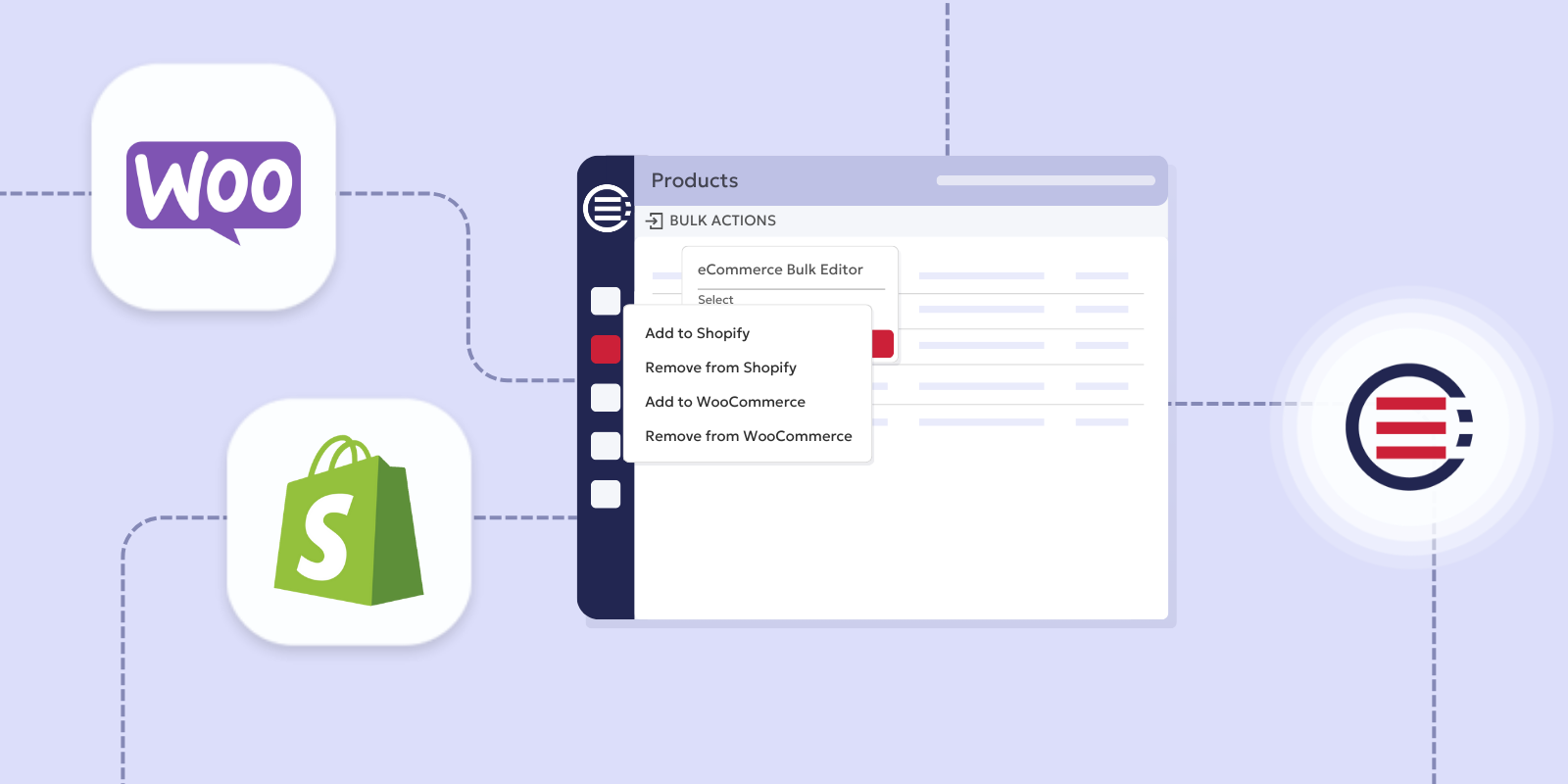On this page
Subscribe for updates
Keep up with OrderEase and access industry-leading order operation insights.
Growth doesn’t just happen in eCommerce; it compounds as you scale. More channels mean more customers, more SKUs, more shipments… and ultimately, more places for your operations to break. At some point, the spreadsheet and shipping app approach that got you here won’t get you further. That’s the breaking point where most teams begin searching for help: “How do I automate order handling?” “What tools scale eCommerce order management?” and “How do fast-growing brands keep up without hiring armies of people?”
The truth is, order volume itself isn’t the problem. What breaks under pressure is how those orders are managed. Without a real system in place, every new channel adds a little more friction, every big promotion creates another backlog, and what used to be a competitive advantage (growth) turns into operational drag.
When it’s structured correctly, eCommerce order management keeps your business scaling faster, smarter, and with more control.
Why eCommerce Order Management Breaks (and How It Should Work Instead)
In most businesses, order management evolves reactively. A single storefront turns into multiple marketplaces. A small warehouse becomes two or three. Wholesale or retail partnerships enter the mix. What started as a clean, direct flow of orders now involves half a dozen disconnected systems. Teams are copying and pasting data, manually reconciling inventory, and struggling to track fulfillment across fragmented tools.
The problem is that this kind of “growth by patchwork” creates fragility. It works until it doesn’t.
A spike in demand, a seasonal surge, or one new major retail partner can push the entire operation past its breaking point. That’s when mistakes multiply: overselling inventory, late shipments, missing data, compliance issues, unhappy customers.
Modern eCommerce order management flips that model.
Instead of reacting to complexity, modern eCommerce order management orchestrates it. Orders are captured from every channel and flow into a single system. Inventory syncs in real time. Fulfillment routes are automated. Tracking is updated without manual input. Teams don’t scramble to keep up, they operate from a shared, reliable source of truth.
The shift from duct-taped processes to structured orchestration is what separates brands that grow smoothly from those that spend their best years firefighting.
The Tools That Power Scalable eCommerce Order Management
When companies hit that scaling threshold, they typically turn to technology to solve the pain. But the type of tool they choose determines how well it actually works.
Some opt for shipping automation tools. They’re simple, inexpensive, and solve for label generation and notifications. But they don’t touch the upstream complexity. Others use integration platforms to stitch systems together, but that often leads to fragile workflows that break at scale.
And then there are true Order Management Systems (OMS); platforms built to orchestrate the entire order lifecycle. This is where growth stops being chaotic and starts becoming structured.
Here’s how the most common tools fit into the landscape:
OrderEase; Built to Scale Real-World eCommerce Operations

For companies managing multiple sales channels, retailer portals, and complex fulfillment, OrderEase isn’t just a tool; it’s infrastructure. It’s an OMS designed specifically for growing suppliers, brands, and distributors that need to automate and standardize their eCommerce order management without duct-taping half a dozen apps together.
What sets it apart is its scope. OrderEase doesn’t just automate labels or sync inventory; it orchestrates the entire flow:
-
Orders from marketplaces, eCommerce storefronts, and retailer portals land in one centralized hub.
-
Inventory updates in real time, preventing overselling and backorders.
-
Fulfillment is automated and routed to the right location, fast.
-
Tracking updates go out to customers without any manual handling.
-
ERP and logistics systems integrate cleanly so data flows across the business.
For scaling teams, that means absorbing volume without adding headcount—and scaling up without losing control.
Ideal for: Mid-market and enterprise brands, suppliers, and distributors scaling across multiple channels.
Pricing: Flexible, typically in the low four figures per month, depending on volume. Starts at $350/month.
Limitation: Overpowered for merchants processing <50 orders/day.
Cin7 — Inventory-Heavy Retailers
Cin7 built its reputation as an inventory management platform that tacks on OMS features. It’s popular among mid-market retailers that prioritize stock accuracy and channel integrations.
Pros: Strong inventory functionality, solid channel coverage, and a good fit for traditional retail ops.
Cons: Less robust orchestration, especially when you need deep B2B workflows or high-volume automation.
Pricing: Roughly $349–$1,000+/month, depending on modules.
Skubana (Extensiv) — Marketplace Consolidation
Skubana was built to simplify marketplace operations, offering decent automation for DTC and omni-channel sellers.
Pros: Clean marketplace aggregation, helpful reporting.
Cons: Limited flexibility for more complex operations and heavier B2B integrations.
Pricing: Starts around $1,000/month.
Brightpearl — OMS with ERP Leanings
Brightpearl is often chosen by established eCommerce brands that need both operational and financial oversight in one place.
Pros: Combines OMS and ERP functions; good reporting.
Cons: Heavy to implement, less agile than API-first platforms.
Pricing: Enterprise-level, typically customized.
ShipStation & EasyPost — Shipping Automation Only
These are excellent tools for early-stage merchants that need shipping automation and don’t yet have operational complexity.
Pros: Affordable, quick to set up, easy to use.
Cons: Doesn’t solve upstream order orchestration or inventory visibility.
Pricing: $10–$200/month.
Why an OMS Like OrderEase Wins in the Long Run
Each of these tools serves a purpose. Shipping platforms make shipping faster. Integration platforms connect systems. Inventory tools keep stock counts accurate. But only a true OMS like OrderEase turns eCommerce order management into a scalable advantage.
-1.png?width=522&height=451&name=A%20person%20here%20makes%20it%20look%20like%20we%E2%80%99re%20delivery%20orders%20doing%20DTC%20workflow%20(23)-1.png)
That’s because OrderEase focuses on orchestration rather than patching. As volume increases, you don’t need to add tools or people. You just keep flowing orders through one clean operational layer. That’s the difference between “keeping up” and actually scaling strategically.
Discover our B2B eCommerce platform
Real-World Example: Turning a Bottleneck into a Growth Engine
A mid-sized supplier handling orders from Shopify, multiple marketplaces, and a major retailer portal used to rely on manual entry and nightly inventory updates. Seasonal peaks meant chaos with delays, errors, and late shipments were inevitable.
After moving to OrderEase, they connected every sales channel into one OMS. Orders synced automatically, routing and shipping happened without manual steps, and inventory stayed accurate in real time.
The results:
-
Order processing time dropped by more than 80%.
-
Shipping errors fell drastically.
-
Peak season no longer required temporary staff.
-
The team gained visibility into every order, every channel, in real time.
That’s the power of treating order management like a growth function, not a back-office chore.
The Future of eCommerce Order Management
What’s coming next isn’t just more automation, it’s intelligence. AI-powered forecasting will predict demand more accurately, helping companies allocate inventory before problems arise. Smart routing will lower shipping costs and speed up delivery. Real-time visibility will extend across every link in the chain, from marketplace to warehouse to retailer.
The businesses that build on solid OMS infrastructure now will adopt these innovations quickly. The ones still relying on spreadsheets and fragile integrations will spend their time patching, not scaling.
eCommerce order management sits at the core of your operational strategy. If it’s fragile, growth exposes every crack. If it’s strong, growth becomes leverage.
-
Shipping apps are great when you’re small.
-
Integrators work in the short term.
-
But an OMS like OrderEase gives you the structure to grow—without burning out your team or breaking your systems.
The brands that thrive in the next wave of eCommerce won’t be the ones with the most sales channels. They’ll be the ones who can manage them with precision, speed, and control.
![]()
FAQs About eCommerce Order Management
What is eCommerce order management?
eCommerce order management is the process of capturing, tracking, fulfilling, and analyzing online orders from multiple channels. It involves everything from order placement to delivery, including inventory sync, routing, and communication. A strong OMS centralizes and automates these workflows.
How do I know if I need an OMS?
If your team is manually entering data, switching between multiple systems, or struggling during peak volume, you’ve likely outgrown basic tools. An OMS like OrderEase is designed to scale order handling without adding headcount.
What’s the difference between an OMS and a shipping tool?
Shipping tools automate label creation and notifications. An OMS orchestrates the entire order lifecycle, connecting sales channels, inventory, fulfillment, and logistics into one unified system.
How much does an OMS cost?
Pricing varies by vendor and order volume. OrderEase typically starts in the low four figures per month, with flexible pricing. Shipping tools like ShipStation start as low as $10/month but offer far less functionality.
Can an OMS integrate with my existing ERP or eCommerce platform?
Yes. Modern OMS platforms, including OrderEase, integrate with popular ERPs, retailer portals, and eCommerce platforms to provide real-time visibility and automation.


